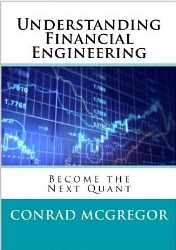When the equity markets were rallying off of the March 2009 lows there were many news articles pointing at the destruction of the dollar as a cause for the rally. Indeed, if you think about asset prices (stocks, houses, food, commodities etc), when the dollar loses its buying power the nominal asset prices should rise. Likewise, when the dollar gains buying power the nominal asset prices should fall. What is interesting is that this was not always the case. When there is robust growth, an equity market can rally with its currency as global investors rush to put their money in a booming economy. In the late 90’s when the stock market was roaring, the dollar was roaring with it. When the market corrected from 2000 through 2003, the dollar corrected with it. This dynamic broke down in 2003 in parallel and since then we have not looked back. We can most likely attribute this to very accommodative monetary policies.
If we focus on recent history and the ugly housing crisis that started to show up in 2005, we see the dollar being bid up when stocks are destroyed. Likewise, off of the March 2009 rally we saw that the dollar was weakening as stocks were strengthening.

During the financial crisis the spikes in the dollar (flight to quality) were highly synchronous to the spikes downward in equities
In the crisis, the dollar peaked out at about 89 while the S&P 500 bottomed at about 675. From the bottom in March until the end of 2009, the dollar lost ground while equities rallied. At the end of 2009, the Euro started its massive slide of over 20% while US equity markets continued to rally.
What is “good” about the recent history is that the dollar has rallied to crisis levels (mostly because of the Euro destruction) while equity markets are still holding on to over 55% of their gains since the March 2009 lows. This means that our dollar purchasing power should theoretically be the same as it was during the bowels of the crisis while our equity wealth is 55% higher. It also shows that despite a strong rally in the dollar, stock valuations have held on against the current (so far).
If you place the current dollar strength against the US deficit backdrop, then this current environment provides an opportunity. The Australian dollar is off over 10% since this “flight to quality” began while their equity markets are off nearly 25% (with a dividend yield over 6%). These crises moments are the occasions to diversify out of countries with fiscal positions that have only inflationary solutions. The purchasing power of one dollar in 1967 is 15 cents today. Do you believe that will increase or decrease in the next 10 years?




